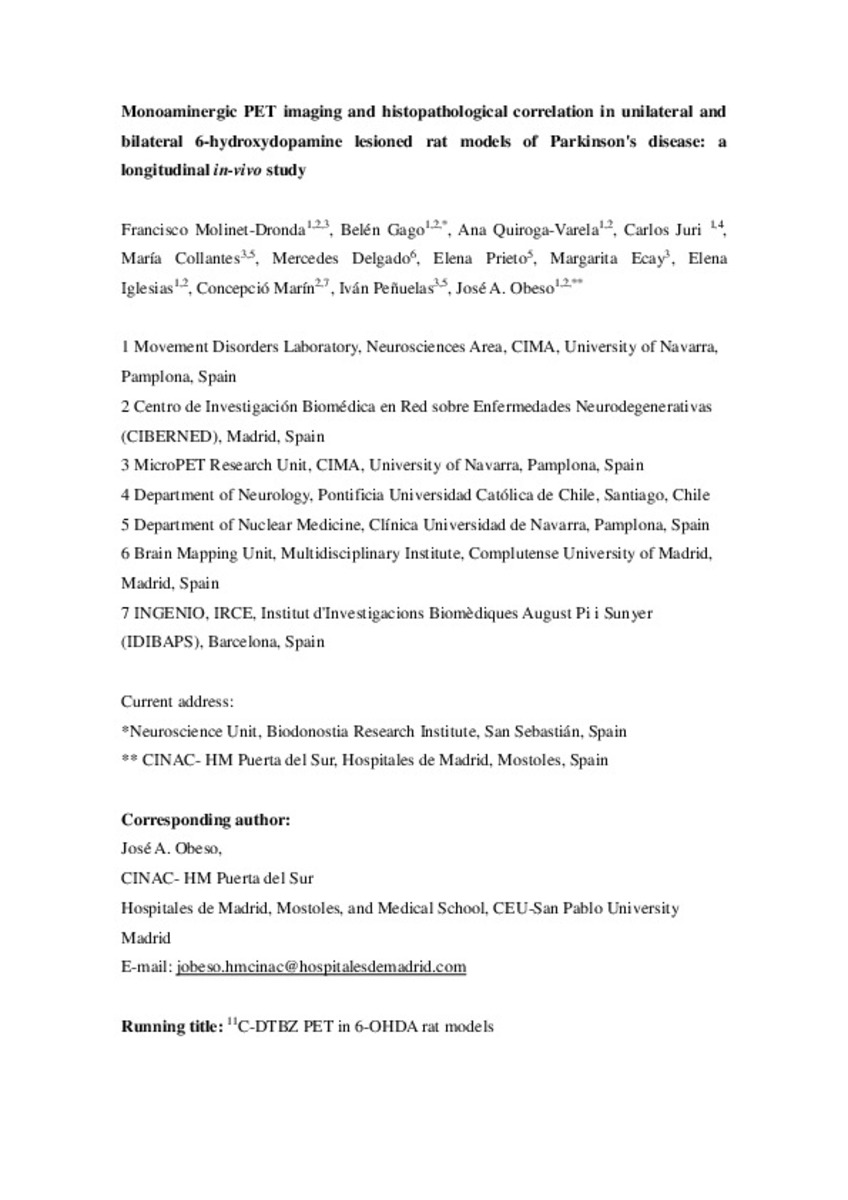Monoaminergic PET imaging and histopathological correlation in unilateral and bilateral 6-hydroxydopamine lesioned rat models of Parkinson's disease: a longitudinal in-vivo study
Palabras clave :
Rat models
Dopaminergic marker
Nigro-striatal depletion
[11C]-dihydrotetrabenazine (11C-DTBZ)
Positron emission tomography (PET)
6-Hydroxydopamine (6-OHDA)
Parkinson's disease
Fecha de publicación :
12-feb-2015
Nota:
Creative Commons Attribution Non-Commercial No Derivatives License
Cita:
Molinet-Dronda F, Gago B, Quiroga-Varela A, Juri C, Collantes M, Delgado M, Prieto-Azcárate E. Monoaminergic PET imaging and histopathological correlation in unilateral and bilateral 6-hydroxydopamine lesioned rat models of Parkinson's disease: a longitudinal in-vivo study. Neurobiol Dis. 2015 May;77:165-72.
Aparece en las colecciones:
Ficheros en este ítem:
Descripción
Artículo principal
Estadísticas e impacto
0 citas en

0 citas en

Los ítems de Dadun están protegidos por copyright, con todos los derechos reservados, a menos que se indique lo contrario.

















